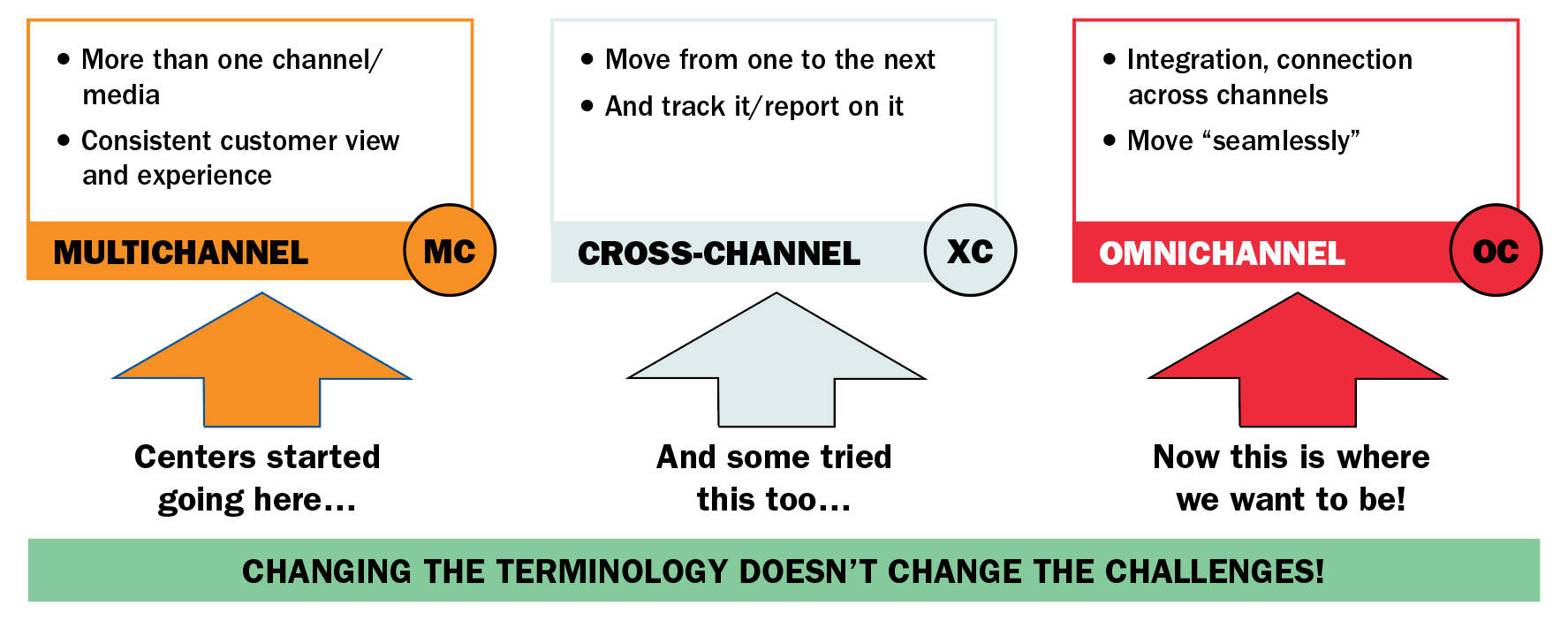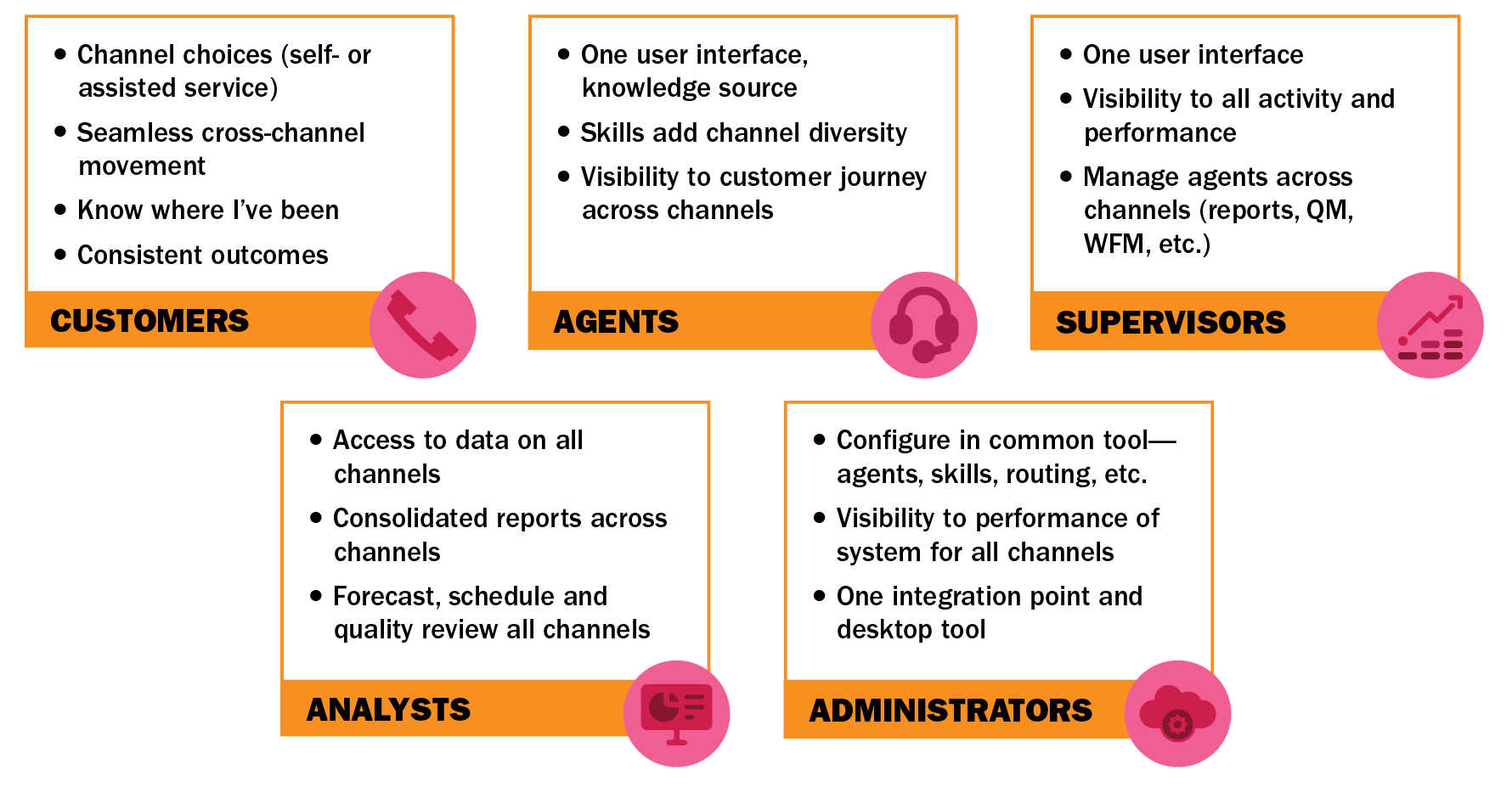Time to Try Omnichannel… Again

“If at first you don’t succeed, try, try again.” This lovely phrase we all learned as children could come in handy right about now! Omnichannel (OC) is not new, or untried, but it is still an elusive goal for most centers. It has even greater importance as digital channels become more prominent. (See sidebar below, “Debunking the Myth of Low Volume”)
Debunking the Myth of Low Volume
Some OC efforts have been held back by the low volume of new channels. Yet many attempts at channel expansion suffer from poor execution—limited hours, intermittent availability, long response time, no QM, and no WFM to make sure staffing matches workload. Success lies beyond reach because the center just isn’t taking it seriously. Customers notice and default to voice… even when they’d prefer not to.
Voice calls won’t be the predominant path forever! Beyond your aging parents or grandparents, how many people do you know who prefer to make a call as their first choice? I thought so!
Look at your customer demographic and figure out how they want to communicate—then do it well! That means the proper tools, processes and staff to handle it with the same performance management as voice. And don’t forget diligent promotion—invite your customers to partake!
 We are in at least the second generation or naming convention (see Figure 1). Multichannel came first, and if we’re being honest, it had the same goals (“seamless, integrated” customer experience in the channels of choice). Cross-channel was thrown in there by some. Whatever we call it, it has proved hard, for many reasons, but that doesn’t mean we give up or settle for a hodgepodge of solutions or channel gaps. The time for omnichannel is now—so you need to start pursuing it (or re-pursuing it) the right way.
We are in at least the second generation or naming convention (see Figure 1). Multichannel came first, and if we’re being honest, it had the same goals (“seamless, integrated” customer experience in the channels of choice). Cross-channel was thrown in there by some. Whatever we call it, it has proved hard, for many reasons, but that doesn’t mean we give up or settle for a hodgepodge of solutions or channel gaps. The time for omnichannel is now—so you need to start pursuing it (or re-pursuing it) the right way.
Getting OC Right
So how do you get it right? Start with a (fresh) vision. What should your omnichannel look like? Try a “phoenix” exercise if you can, defining what things would look like if you were starting from scratch, rising from the ashes of your current mix of channels and tools. Engage all channel owners across your ecosystem (CC, marketing, digital channels, IT). Consider various perspectives—Customers, Agents, Supervisors, Administrators, Analysts for WFM, QM, Reporting and Analytics (See Figure 2, “Perspectives,” for a starter).
Themes like visibility, access and common tools quickly emerge and align with that “seamless, integrated” mantra. Define what the vision and themes mean from a technology perspective, as well as people and processes.
Layer in Reality
With a vision in mind, you can create an inventory of your current state—channels and tools. Start with the routing and reporting tools for various channels. Then think about related tools—CRM, KM, WFM, QM, Analytics, etc. Observe the number and diversity of tools, and the gaping holes. Explore the challenges your current environment creates and how it falls short of your vision. Identify what you must use, what you could replace or retire (and when), and what gaps exist. And don’t forget to address the security needs for each channel (e.g., email and chat only when logged in on the portal for financial services).
Build a Plan to Pursue OC
Define a technology path to move in the direction of your vision, addressing the challenges and gaps identified. Few can truly rebuild, but you can get on a cohesive path instead of just adding the next channel in isolation. Recognize there are options for OC routing and reporting, as shown in Figure 3. The first option is nirvana—all channels managed in one tool. If CRM plays a big role in your center and if you want to use it to manage digital channels, look for technologies that integrate with it. If you’re stuck using a separate routing engine for each channel, don’t feel alone. Make the most of it short-term. However, to truly pursue OC, you need to start cleaning up the mess.
Unless you have a green field or a big project, you’ll need to create a phased plan, outlining the technology changes or additions. Transform your current state inventory to a more cohesive OC environment with some combination of:
- Buy new
- Add Features
- Upgrade
- Integrate
- Consolidate
Don’t forget the associated process and people changes, looking within the contact center, but also across your organizational ecosystem. It will be a journey to true OC, but it’s not too late to start and it is definitely time to get started… again.
| DO | DO NOT |
|---|---|
|
|
Lori Bocklund is President of Strategic Contact, an independent consulting firm that helps companies optimize the value of their customer contact technology and operations.
– Reprinted with permission from Contact Center Pipeline, http://www.contactcenterpipeline.com







